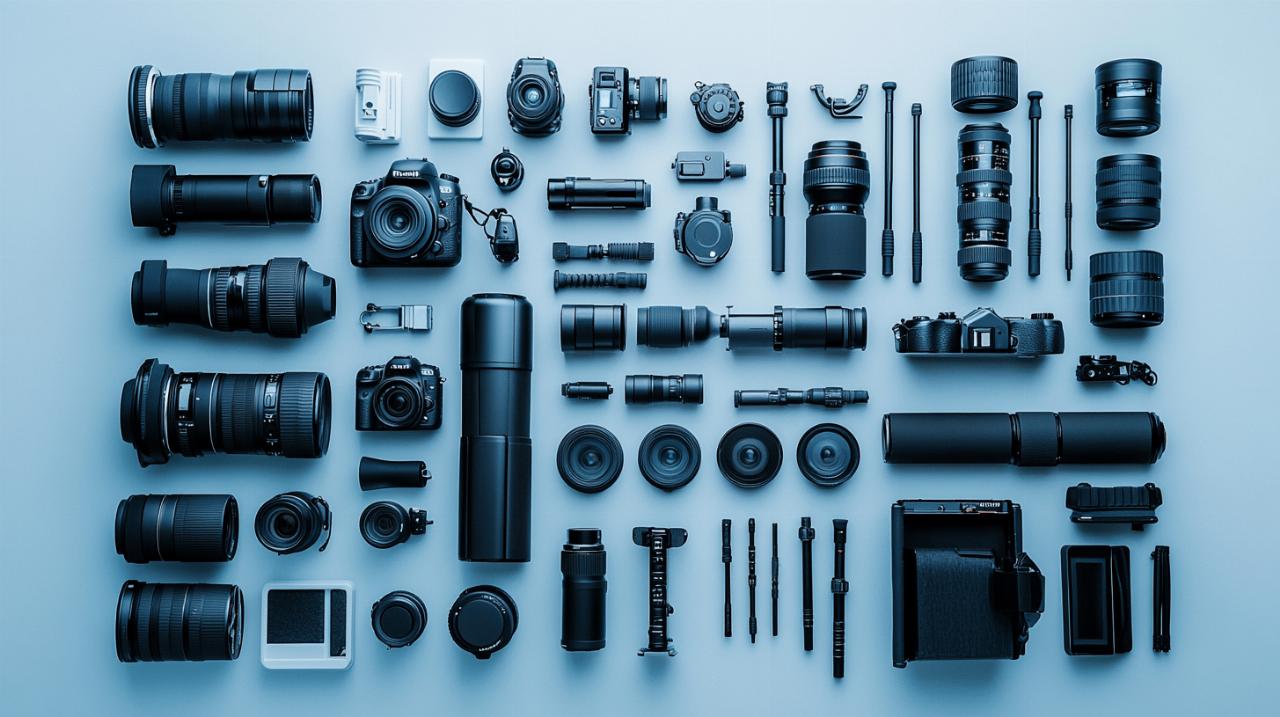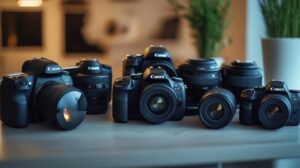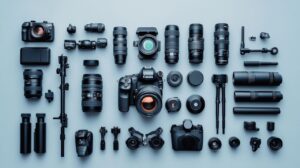The clarity of your photographs greatly depends on maintaining a clean camera sensor. Dust and debris can significantly impact image quality, making sensor cleaning an essential skill for every photographer. This guide from Artreflex Photo explores the fundamentals of sensor maintenance to help you preserve your equipment and enhance your photographic results.
Understanding camera sensor maintenance
Camera sensors are delicate components that require proper care to function optimally. Despite built-in protective measures, sensors inevitably collect dust particles during normal usage, particularly when changing lenses or shooting in dusty environments. Knowing how to identify issues and properly maintain your sensor is vital for extending your camera's lifespan and ensuring pristine image quality.
Signs your sensor needs cleaning
Dust spots are the most common indicator that your sensor requires attention. These appear as dark specks or smudges in your images, especially when shooting with smaller apertures (f/8 or higher). To check for dust, take a test shot of a clear sky or white wall using a narrow aperture like f/16 or f/22. Examining this image will reveal any particles that have settled on your sensor. Many photographers also use Lightroom's 'Visualize Spots' feature or specialized tools like a Carson SensorMag loupe to identify contamination that might otherwise go unnoticed.
Benefits of regular sensor maintenance
Maintaining a clean sensor delivers numerous advantages beyond just spot-free images. Regular maintenance prevents dust buildup that could lead to permanent damage or autofocus issues. Clean sensors produce sharper, more vibrant photographs with better contrast and detail. Many professional photographers recommend cleaning before important shoots like weddings to avoid time-consuming post-processing work. By establishing a routine maintenance schedule, you'll extend your camera's operational life while consistently producing higher quality images that truly showcase your artistic vision.
Basic sensor cleaning tools from artreflex photo
Photography enthusiasts understand that maintaining a clean camera sensor is vital for producing high-quality images. Dust spots can significantly degrade image quality, appearing as specks or smudges in your photos—particularly noticeable when shooting at smaller apertures (f/8 or higher). Artreflex Photo offers specialized tools designed for effective sensor maintenance that help photographers achieve spotless results without risking sensor damage.
Blowers and brushes for dust removal
Dry cleaning methods form the first line of defense against sensor contamination. Artreflex Photo provides high-quality air blowers specifically designed for camera sensors—these should be replaced approximately every 18 months to maintain effectiveness. When using a blower, position your camera with the sensor facing downward to allow gravity to assist in dust removal. For more stubborn particles, Artreflex Photo offers specialized sensor brushes made with nylon bristles that safely lift dust without scratching the delicate low-pass filter that protects your sensor. These tools are essential for regular maintenance and should be used in a clean, dust-free environment to prevent introducing additional contaminants during the cleaning process.
Sensor cleaning swabs and solutions
When dry cleaning proves insufficient, Artreflex Photo's wet cleaning tools become necessary. Their precision-cut sensor swabs are designed for specific sensor sizes and provide thorough contact with the sensor surface without leaving fibers behind. These swabs work in conjunction with Artreflex Photo's specially formulated cleaning solutions that effectively remove stubborn spots, fingerprints, and oil without leaving residue. For optimal results, apply just a few drops of solution to the swab—never directly to the sensor—and make single, deliberate passes across the sensor surface. Many photographers find the VSGO cleaning kits offered by Artreflex Photo particularly effective for DIY sensor maintenance. Creating a proper cleaning workspace free from airborne particles and using a headlamp or sensor loupe to inspect your progress will maximize your success with these professional-grade tools.
Advanced cleaning techniques for different sensor types
Photography enthusiasts know that maintaining clean camera sensors is essential for optimal image quality. Camera sensors are magnets for dust and particles that can impact your final images, appearing as specks or smudges particularly when shooting at smaller apertures like f/8 or higher. For serious photographers, understanding how to properly clean different sensor types can preserve your equipment and ensure consistently high-quality results.
Full-frame vs APS-C sensor cleaning considerations
When cleaning camera sensors, size matters significantly. Full-frame sensors provide larger surface areas that require more careful handling during the cleaning process. With their bigger dimensions, full-frame sensors need larger swabs and potentially more cleaning fluid to ensure complete coverage. The cleaning workspace becomes even more critical for full-frame sensors as their larger surface area can attract more dust particles during the cleaning process.
APS-C sensors, while smaller, present their own unique challenges. Their compact size means less surface area to clean, but also requires more precision. When performing a wet cleaning on an APS-C sensor, you'll need to use appropriately sized sensor swabs to avoid missing edges or applying too much pressure. The dust detection process also differs slightly—APS-C sensors may show dust patterns differently in test images due to their crop factor. Before beginning any cleaning process, take a test image of a clear sky or white wall at a narrow aperture (f/16 or f/22) to identify dust locations on either sensor type.
Mirrorless camera sensor cleaning specifics
Mirrorless cameras present unique sensor cleaning challenges compared to DSLRs. The sensor in a mirrorless camera is constantly exposed whenever the lens is removed, significantly increasing the risk of dust contamination. This persistent exposure means users need to be especially cautious during lens changes and develop fast, clean workflows to minimize dust entry.
The self-cleaning mode found in many mirrorless cameras can be particularly effective and should be your first line of defense. Most modern mirrorless cameras include sophisticated sensor vibration technology that can shake off loose particles. For stubborn dust that remains after using the self-cleaning function, an air blower specifically designed for sensor cleaning becomes essential—remember that these should be replaced approximately every 18 months for optimal performance. If basic cleaning methods prove insufficient, wet cleaning using sensor swabs and appropriate cleaning fluid might be necessary. The compact design of many mirrorless bodies can make accessing the sensor more challenging, so proper lighting (using a headlamp or sensor loupe) becomes even more important during the cleaning process. After any cleaning session, always perform a dust check by taking another test image to verify results.
Creating your artreflex photo cleaning kit
Photography captures precious moments in time, and maintaining pristine image quality requires regular sensor cleaning. Dust spots can significantly impact your photos, appearing as dark specks that become more visible at smaller apertures (f/8 or higher). Setting up a proper Artreflex Photo cleaning kit is essential for preserving your equipment and ensuring optimal performance throughout your photographic journey.
Must-have items for photographers at every level
Every photographer needs specific tools to effectively clean camera sensors without causing damage. Start with a quality air blower – this fundamental tool removes loose particles without making contact with the sensor. Air blowers should be replaced approximately every 18 months to maintain effectiveness. Next, invest in sensor swabs designed specifically for your camera's sensor size – these specialized tools are crucial for wet cleaning methods when dealing with stubborn spots.
For precision work, consider adding a headlamp or sensor loupe to your kit, which helps identify exactly where dust resides on your sensor. A sensor brush made with anti-static materials can be valuable for dry cleaning methods. Complete your kit with appropriate cleaning fluid that leaves no residue. Remember that your camera's built-in self-cleaning mode should always be your first cleaning attempt before progressing to manual methods.
Storage and maintenance of cleaning materials
Proper storage of your cleaning kit is just as important as the cleaning process itself. Keep all cleaning materials in airtight containers to prevent contamination. Adding silica gel packets helps control moisture levels and extends the lifespan of your tools. Store your cleaning supplies away from direct sunlight in a cool, dry place to maintain their effectiveness.
When preparing for sensor cleaning, create a clean workspace free from airborne dust and debris. Never rush the cleaning process – patience prevents sensor damage. After cleaning sessions, inspect your tools for contamination and replace any compromised items immediately. Following a consistent cleaning schedule based on your shooting frequency and environment helps minimize dust accumulation. For photographers frequently changing lenses in challenging environments, more regular sensor checks will help maintain image quality while reducing the need for extensive cleaning sessions.





